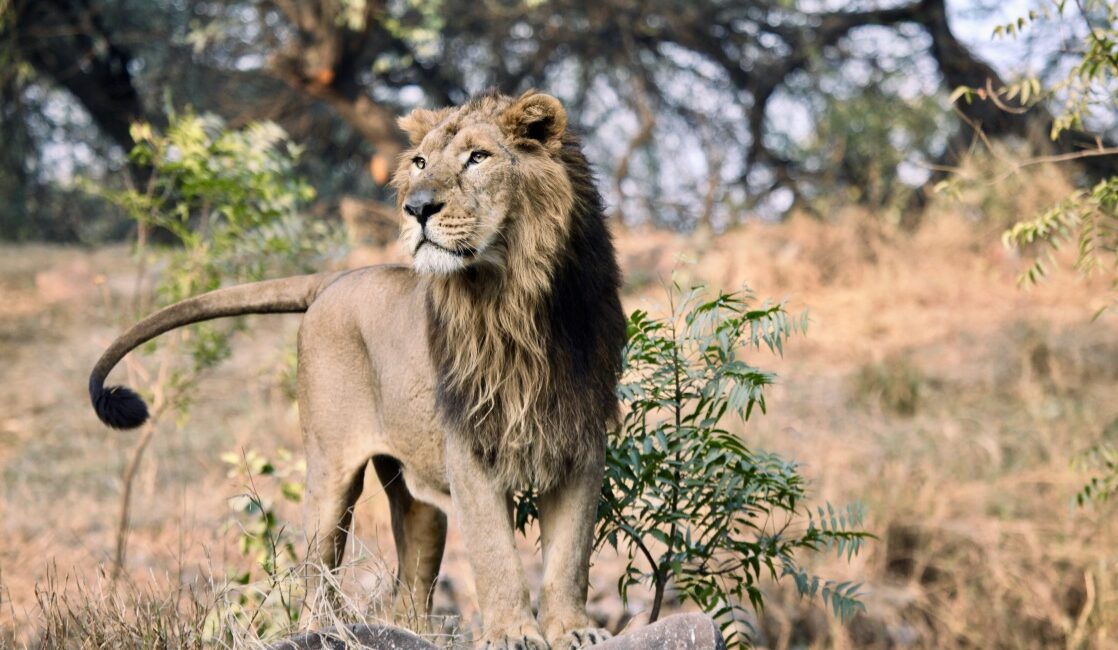“Gir Lions: Guardians of the Asiatic Wilderness”
In the heart of Gujarat, where the landscape shifts from arid scrublands to teak forests, resides a majestic and iconic species that has become synonymous with India’s commitment to wildlife conservation—the Asiatic lions of Gir.
Revered for their regal presence and historical significance, these lions stand as guardians of an ecosystem that epitomizes the delicate balance between man and nature.
The Gir National Park and Wildlife Sanctuary, once the last refuge of the Asiatic lion, has become a sanctuary for both the big cats and the ideals of conservation. The lions of Gir are not just inhabitants of this rugged terrain; they are symbols of resilience, adaptability, and the successful efforts to protect a species on the brink of extinction.
For centuries, the Asiatic lion has been intertwined with the cultural and historical fabric of India. Yet, by the early 20th century, rampant hunting and habitat loss had reduced their numbers to a mere handful, pushing the species to the brink of extinction. It was in the undulating landscapes of Gir that a concerted conservation effort was launched to ensure the survival of the Asiatic lion.
The success story of the Gir lions is a testament to the dedication of conservationists, wildlife enthusiasts, and local communities. Through rigorous protection measures, habitat restoration, and community involvement, the population of Asiatic lions has witnessed a remarkable resurgence. From a population of less than 20 individuals in the early 20th century, the Gir lion population has now grown to over 500, marking one of the most successful conservation stories in the annals of wildlife preservation.
Beyond their numerical resurgence, the Gir lions contribute significantly to the ecological balance of the region. As apex predators, they regulate herbivore populations, preventing overgrazing and maintaining the health of the ecosystem. Their presence fosters a delicate equilibrium, showcasing the interconnectedness of species within the intricate web of nature.
However, the success of Gir’s lions also brings forth new challenges. The limited geographical range of the Asiatic lion population in Gir makes them vulnerable to disease outbreaks and other threats. Conservation efforts must evolve to address these challenges, including exploring the possibility of establishing additional populations in suitable habitats to ensure the long-term survival of the species.
As we celebrate the triumph of the Gir lions, it becomes imperative to look ahead and embrace a holistic approach to conservation. The story of the Asiatic lions of Gir is not just a regional success but a global reminder of the impact that concerted efforts can have on preserving our planet’s biodiversity.
The lions of Gir are more than just magnificent creatures; they are ambassadors of hope and resilience. Their continued presence in the wild serves as an inspiration for future conservation endeavors, reminding us that with dedication and collaboration, we can secure a future where humans and wildlife coexist harmoniously, and the roar of the Asiatic lion echoes through the landscapes of India for generations to come.


